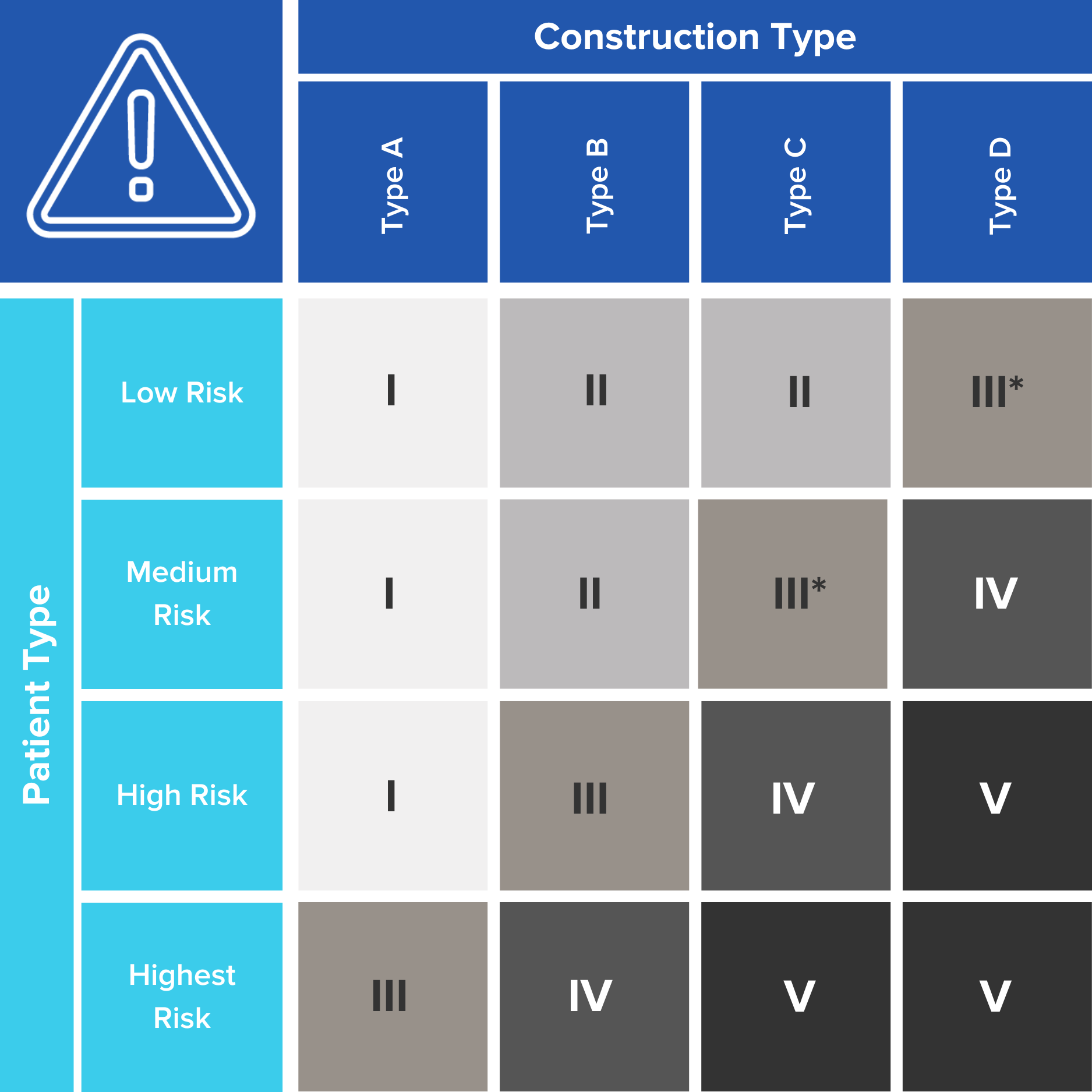Share this
ICRA Guidelines Help Navigate Toward Confident Construction Renovation
by HEPACART on Jun 05, 2023

Facilities managers know ongoing routine maintenance is needed in every facility, regardless of size or staff. And while every maintenance project is not a construction project, facility managers must address health and safety concerns by following protocols.
We know maintenance on HVAC systems, electrical work, or other utilities requires more than a to-do list. Especially routine maintenance projects in healthcare since they require extra planning and consideration. Not everyone understands or acts on the health and safety concerns that must be considered.
Are you confident the maintenance staff in your facility is safely completing projects? It is best to be consistent with regulatory compliance outlined by several governing bodies (Joint Commission, specific facility, and municipality guidelines).
The Infection Control Risk Assessment guidelines help identify the risk associated with your project and the measures and precautions. By implementing the recommendations of the ICRA matrix, you can create a safe culture that prioritizes the health and safety of your facility.
What Is ICRA?
The Infection Control Risk Assessment (ICRA) guide helps determine the risk to patients and defines the steps to reduce the risk associated with construction projects. ICRA guidelines identify the effect that healthcare construction renovations will have on the air and water quality of the surrounding area. ICRA helps the construction teams answer questions such as, "What will the impact of this project be," and "How can we most safely navigate the project?"
During the processes of construction, contractors know that the hospital's schedules are the ones driving the timelines of the projects. There must be open and purposeful communication between hospital staff and construction teams to keep the environment safe for everyone involved. By sticking to ICRA, the guidelines will provide a common language for both parties to understand the best practices and expectations of one another.
ICRA Requirements: Before, During, and After
As the facility manager, ensure ICRA guidelines are correctly planned for and implemented, including every stage of the maintenance process.
Before the project is started, create a separation between areas that will be affected and those that will not. Using HEPA filtration units where needed; will help maintain air quality and filter out particles that can spread from construction projects.
When working on a project, know guidelines are followed, equipment is used correctly, and proper cleaning processes are done regularly.
Lastly, after the maintenance, ICRA guidelines recommend a thorough cleanup. It includes barrier removal, debris disposed of properly, and equipment removed so the areas can be cleaned and disinfected.
Following ICRA Steps Effectively
Once the team correctly identifies the facility's projects, vulnerabilities, and potential risk factors, you can now carefully follow the appropriate ICRA guidelines, which is key to maintaining a safe, compliant environment for patients and staff.
Here are a few ways to ensure that ICRA is the expected standard that is upheld at all times:
Meet With the Construction Team Regularly
Communication is essential when it comes to maintaining all levels of safety. As the facility manager, you are responsible for communicating the expectations to the construction team and ensuring they have confidence. This process is not taken lightly; following guidelines must be a priority for everyone on the site to keep everyone safe.
Ensure Everyone Knows and Understands the Assessment Structure
Wherever possible, communicate the standards, guidelines, and appropriate processes to hospital staff, construction teams, maintenance workers, etc. The more people fully understand the big picture, the more you can identify areas that need improvement or potential problems.
Perform Constant Infection Control
While planning and preparation are critical to infection control procedures, the work doesn't stop there. Throughout the entire process, infection control should be a central focus of the project, from modifying HVAC systems where necessary to using appropriate barriers and negative air machines to direct the flow of airborne contaminants away from sensitive areas.
Continually Test and Monitor Air Quality
Putting preventative measures into place, you must be sure to test the effectiveness of these practices and adjust accordingly. After all, the significance of dust containment and infection control is not something to be assumed. Monitoring Indoor Air Quality (IAQ) when completing routine maintenance in areas that will ensure the safety of high-risk patients.
Communicate With Staff and Keep Them Up-to-Date
Maintenance projects vary in size and scope, and your approach to maintaining a safety standard should also ebb and flow. As your project progresses, ensure you communicate with your staff to confirm that they understand the latest safety standards and processes. Ensuring they have the most up-to-date information will make your project more smoothly and safely.
ICRA Guidelines for Risk Measurement
When evaluating ICRA guidelines, determine the level of risk posed to your facility’s occupants. Each level corresponds to the different areas of your hospital and increases in severity depending on the sensitivity of the people in those areas. The levels are as follows:
Low Risk
Low-risk areas of your facility would include areas with few to no people — such as storage areas, basements, or office spaces — where any individuals present are not patients and are not of any increased risk to airborne pollutants.
Medium Risk
Medium-risk areas may house patients, but not those highly susceptible to nasty air particulates. These spaces may include physical therapy, cardiology, or radiology treatment areas.
High Risk
While high-risk spaces are likely to include patients more susceptible to airborne particles, they are typically areas with more people. This could include labor and delivery, emergency rooms, or surgical units.

Don’t Stress Over Harmful Particles: Trust the ICRA Guide
Today, the most important thing you can do is to ensure protocol meets the right standards. You can begin to evaluate your current processes and products that keep containment and patient safety top of mind for everyone. The guide to ICRA is here to walk you through health and safety solutions for your project type and level of risk.
Download the guide today to keep safety easy and worries of staff and patients’ health low. 
